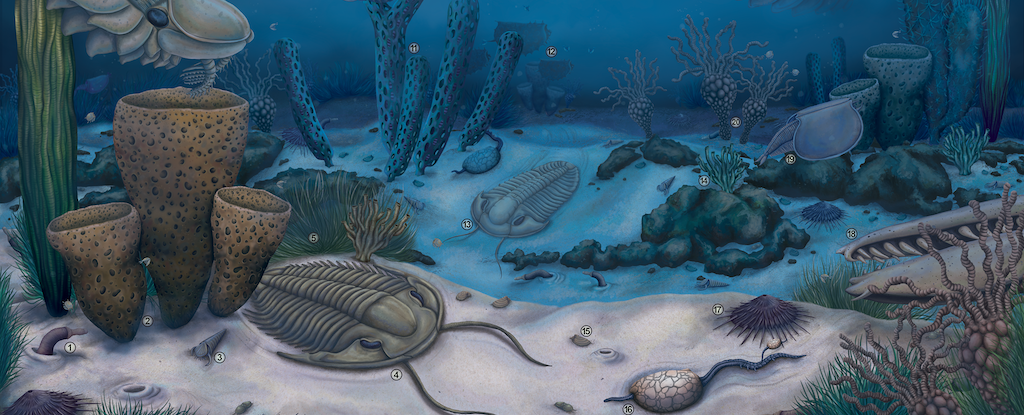
A recent discovery of fossils in the Grand Canyon sheds new light on evolutionary developments during the Cambrian period, approximately 505 million years ago. This finding fills significant gaps in our understanding of how life on Earth evolved after the remarkable Cambrian explosion, a time when diverse and complex organisms began to emerge.
The fossils were unearthed by a research team from the University of Cambridge, which identified over 1,500 small, carbonaceous fossils from the Bright Angel Formation (BAF) of the Grand Canyon. This formation, once a shallow marine environment, has proven to be a treasure trove of information about early life forms. The fossils predominantly consist of priapulid worms, accompanied by crustaceans and mollusks.
Analysis of these fossils reveals a variety of adaptations that reflect the competitive ecological landscape of the time. For instance, the worm species Kraytdraco spectatus was found to possess teeth with intricate filaments that varied in shape and length. The researchers propose that these adaptations allowed the worms to effectively scrape food particles from surfaces, which they could then filter from the water.
Crustacean fossils exhibited features indicative of suspension feeding, utilizing fine hairs to direct food particles toward their mouths, where they were processed by molar-like structures. The mollusks displayed rows of shovel-shaped teeth, suggesting they scraped algae and microbes from surfaces, demonstrating the diverse feeding strategies that emerged during this period.
The Cambrian explosion is often highlighted due to its extensive fossil record, but these new findings emphasize that the evolutionary journey did not stop there. The fossils provide a detailed glimpse into a transformative era when life forms were beginning to settle into their niches and explore new adaptations.
The researchers note that the competitive environment of the late Cambrian may have solidified evolutionary strategies that continue to influence animal success today. “If the Cambrian explosion laid the foundations of modern metazoan adaptive solutions, it is the scaling up of their competitive interactions that may have enforced directional, long-term trends of functional innovation in the Phanerozoic biosphere,” they explained in their study published in the journal Science Advances.
This discovery not only enriches our understanding of early life on Earth but also highlights the importance of the Cambrian period in the evolutionary timeline, marking the origins of most major animal groups, including arthropoda and chordata. The implications of these findings may provide insights into how complex life forms evolved and adapted to their environments in the face of competition and ecological change.







